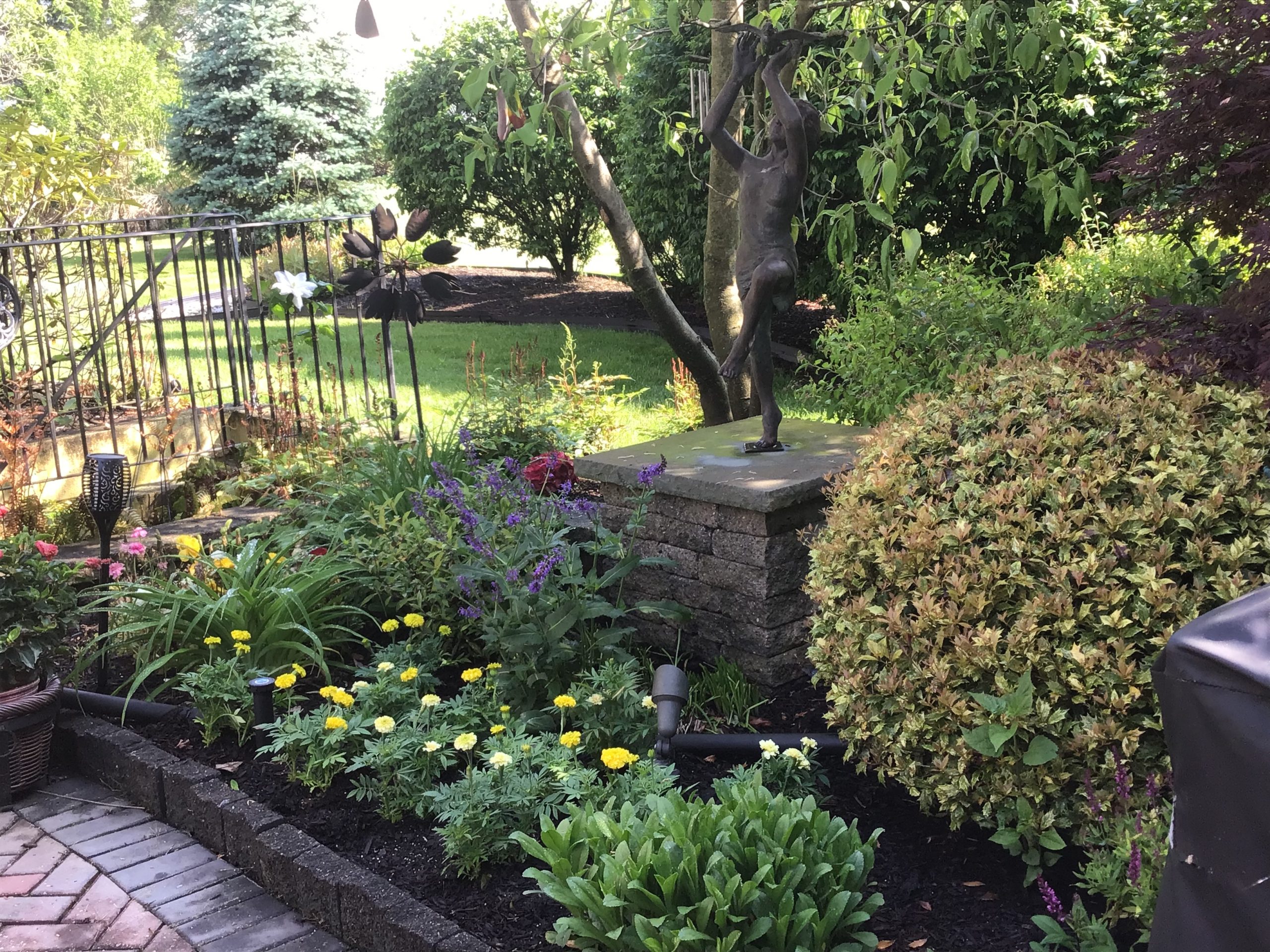Fall Yard Cleanup: 8 Shortcuts for Easy Care
It’s amazing what perennials, mulch, and decorative rocks can do.

#1 Design for Perennials with Different Blooming Seasons

With the different bloom schedules, your yard will stay visually interesting without your having to purchase and plant new flowers every season.
Colorful fall and winter options. Here are some interesting perennials to consider planting, depending on your hardiness zone:
- Mums
- Japanese maple
- Camellia (pictured above)
- Holly bush
- Winterberry holly
- Yellow and red dogwood
- Hellebore
- Some varieties of hydrangea
- Beautyberry
- Sumac
- Russian sage
Related: The Best Choices for a Practically Hassle-Free Yard

Clover even keeps weeds at bay and stays green, unlike most grass lawns.
Turf Tip: When selecting an alternative to grass, be sure to check that they aren’t too aggressive, or you could have a higher-maintenance problem.
#3 Overseed Your Lawn
If you’re set on a grass lawn, you can still keep maintenance minimal by overseeding in the fall.
Weeds will fan out their root systems as the grass goes dormant in winter, so take a preemptive approach in mid-fall by cutting your grass down to about an inch high and rake up the clippings. Spread out new grass seed, water regularly, and add fertilizer once the new grass germinates.
The healthier and denser the lawn is before winter, the less opportunity weeds have to take over. That means less work (and mowing and edging!) you’ll need to do in spring.
Related: Season-by-Season Lawn Care Tips
#4 Add Mulch Beds Around Plants and Walkways

Money-Saving Tip: Avoid buying bags of mulch at big-box stores and instead find a local landscape supplier; you can buy larger quantities that are often priced for professional landscapers (and therefore at wholesale rates). When planting a mulch bed, it’s easy to underestimate the amount you’ll need, so it’s better to buy in bulk instead of by the package, which will likely save you a bundle in time and money!
Keep an Eye Out: As your mulch breaks down in future growing seasons, you may need to replenish your beds with fresh mulch. However, don’t overdo it; maintain a mulch thickness around three inches, and only add more if it’s getting thin. Roots, just like us, need oxygen to work. Burying them under a thick layer of mulch decreases their supply.
#5 Fill Tough Areas With Decorative Rock Beds

Stone Tip: Tinier pebble varieties, like pea gravel, may blow around in areas with high winds, which can wreak havoc on your lawn mower. To keep rocks from traveling into your grass, opt for larger stones, and add edging around the perimeter of rock beds.
#6 Automate Watering Schedules

If you don’t have an underground sprinkler system already installed and aren’t willing to invest in one, an above-ground sprinkler setup attached to your outdoor faucet is a great substitute. Splitters can help by allowing you to also attach drip hoses, which are perfect for garden beds that require a different watering schedule.
Many manufacturers are adding smart features like timers to help you maintain watering schedules on the go or that use the local weather report to skip watering if it’s expected to rain.
#7 Grow Local Plants

Local varieties are often inexpensive at nurseries because they can be sourced more easily than specialty options. To find what grows best in your area, speak to your local nursery or look up your USDA Hardiness Zone online by ZIP code.
#8 Keep Track of Dates to Stop Pruning
Certain plants (especially blooming shrubs like hydrangeas) will begin to form buds for the next year’s growth just before going dormant for the winter. To ensure that your plants grow in nicely the following year, it’s important to note in your calendar when to to stop pruning, and resist the urge to trim plants back until they start to grow again in the spring. To stay on top of it, look up each plant online and keep seasonal reminders in your phone for easy alerts.

 Facebook
Facebook
 X
X
 Pinterest
Pinterest
 Copy Link
Copy Link




